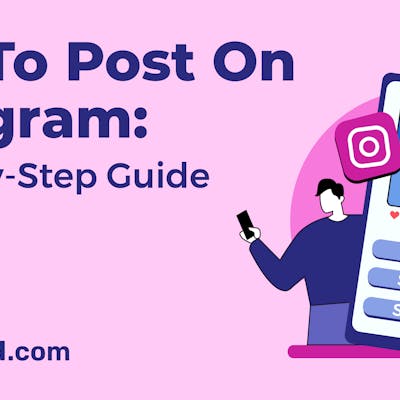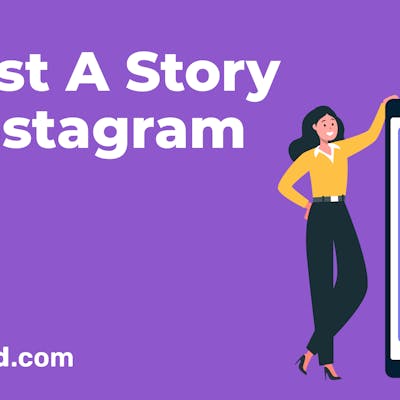Social media has become a powerful tool for businesses and brands to communicate with their customers in today’s digitally-driven world. With platforms like Facebook, Twitter, Instagram, and LinkedIn, it’s easier than ever for customers to interact with brands on a personal level.
Social media allows businesses to provide customer service more efficiently, foster customer loyalty, and promptly address concerns. However, businesses must use social media responsibly to provide excellent customer service. In this guide, we’ll explore social media customer service, its importance, and how you can improve it for your brand.
What is Social Media Customer Service?
Social media customer service includes responding and reacting to their inquiries, addressing their complaints, and acknowledging their feedback in a timely and professional manner through channels like Twitter, Facebook, Instagram, LinkedIn, and more.
Furthermore, besides just reacting to customers’ needs, businesses can be more proactive by reaching out to them through social media to offer help and support. This strategy also allows companies and brands to collect feedback and gain insights from customers, which can be invaluable in improving their products or services.
So, by using social media for customer service, businesses can not only improve customer satisfaction but also enhance their overall performance.
Why is Social Media Customer Service Important In 2025?
Social media customer service is more important than ever in 2025. Nowadays, more customers prefer to use social media platforms for DM support rather than traditional methods like email or phone. According to Hubspot, over half of the customers (54%) prefer social messaging channels for customer service. It’s also worth noting that in 2021, almost two-thirds of customers (63.4%) expect businesses to offer customer service on social media, according to eMarketer.
If a brand or business wants to earn its customers’ trust and loyalty, they need to respond quickly and effectively to inquiries on social media. Again, Sprout Social found that 83% of customers who receive speedy responses on social media are more likely to trust the brand.
These statistics show that social media customer service is now essential for businesses to meet their customers’ expectations, build strong relationships, and establish a loyal customer base.
Now let’s get to some essential reasons why social media customer service is important.
Social media is a prime platform for businesses to connect with their target audience as customers spend a significant amount of time on it. It also provides a swift and personalized way for customers to get their questions and concerns addressed through DM support. Businesses can build trust, gain positive reviews and recommendations by effectively addressing customer issues on social media, and increase customer loyalty. Social media customer service can provide valuable insights into customers’ preferences, pain points, and feedback to improve products and services.
Bonus: 6 Ways To Build Brand Loyalty
5 Tips For Social Media Customer Service Practices
Here are 5 essential tips on how to have an effective social media customer service practice
1. Be Responsive
One of the essential benefits of social media is its speed, and customers often expect a fast response. Therefore, as a brand, you should have a plan to respond to all your customer inquiries or complaints within a reasonable time frame. To make this easier, you can set up automated replies to acknowledge receipt of a message and then respond with a detailed solution later. Ensure that your responses are helpful and address the customer’s needs.
However, to even achieve this, you must make use of the social media platforms your customers are on. Imagine waking up one day to discover a complaint about your brand with thousands of retweets, and you didn’t even know about it because you don’t have a Twitter account. Or missing out on the chance to take advantage of good press from positive feedback because you’re not part of the conversation.
This can eventually affect your brand depending on what moves you have made ahead of time. So, while you plan to respond proactively to your customer, never make the mistake of being on the wrong platform. Here’s a social media customer service example by Starbucks that explains this properly.
2. Monitor your Social Media Accounts
It would be best if you had a dedicated team or staff member to monitor your social media accounts for any customer inquiries or complaints. With the help of a reliable social media monitoring tool like Simplified, you can efficiently track your brand’s mentions and respond promptly to any negative comments. This proactive approach not only addresses customer concerns but also helps in maintaining a positive brand reputation across various social media platforms.
What this will achieve is that it will help you understand the progressions of the conversations that your customers are having about you—a perfect example of a social media service account of Spotify on Twitter.
3. Use a Positive Tone
To make sure you communicate effectively with your customers, it’s important to maintain a professional and positive tone at all times. Avoid using unfamiliar words, slang, or abbreviations that may confuse or remove customers from the conversation. It’s also important that you remain calm and composed, even when dealing with difficult customers, and avoid getting into arguments or heated debates. Remember, your goal is to resolve the issue and provide the best possible customer service. This is how you can gain brand loyalty as well as recommendations of your products or services to their relatives.
4. Use customer Feedback to Grow
Using Social media customer service often grants businesses the opportunity to access lots of customer feedback to help Them improve their products or services. So, as a brand, make sure you take note of the comments and suggestions of your customers and use them to improve your business.
Respond promptly to negative feedback, and address the customer’s concerns. Never let any complaint or positive review go unattended. That’s why it can be a good idea for you as a brand to use a separate account and a dedicated team for your social media customer DM support.
5. Personalize your Responses
Use the customer’s name and reference their specific issue or question in your response. This can help customers feel like they are being heard and understood. Similarly, personalize your response to match the tone of the customer’s message. The SM customer service example shared below depicts how WIX uses personalized responses to address their client.
6. Utilize Social Media Analytics
Use social media customer service tools to measure and analyze the performance of your social media customer service plan. This can help you understand patterns and areas for improvement, such as the most common types of customer inquiries or complaints. Additionally, you can evaluate the effectiveness of your responses by tracking metrics such as response time, engagement rate, and customer satisfaction ratings.
7. Be Transparent
Being transparent is crucial when addressing your customers’ messages or complaints. If your business makes a mistake or experiences a problem, be transparent with your customers. Acknowledge the issue and provide updates on your progress toward resolving it. This can help build trust and credibility with your audience.
Bonus: What Is A Social Media Target Audience And How To Find Yours
Best Social Media Customer Service Platform – Simplified
%20How%20to%20use%20inbox%20for%20social%20media%20management%20-%20YouTube.png)
In 2025, Simplified is the go-to social media customer service platform for businesses. With Simplified you will get access to a social inbox too to view all social DMs in one location and monitor brand conversations across all platforms, including a dedicated platform for DM customer support.
The AI copywriting tool aids in responding to inquiries, assigning messages to support team members, and tracking team member responses. Additionally, the social inbox allows you to view all social media notifications and mark unfinished conversations and messages as resolved or unresolved.
The software also has additional features, including streams that provide a quick overview of your notifications, a media library to upload images, and an emoji function for messaging. Utilizing Simplified’s platform will improve your social media customer service and lead to increased customer satisfaction, engagement, and positive reviews for your brand.
Try Simplified for free now!

















![13 Project Management Software & Tools for Creative Agencies [Free & Paid] 13 Project Management Software & Tools for Creative Agencies [Free & Paid]](https://siteimages.simplified.com/blog/Advertising-Agency-Project-Management-Softwares-01.png?auto=compress&fit=crop&fm=png&h=400&w=400)


![How to Find Your Drafts on Instagram: Posts, Reels & Stories [2025] How to Find Your Drafts on Instagram: Posts, Reels & Stories [2025]](https://siteimages.simplified.com/blog/How-to-Find-Your-Drafts-on-Instagram-Ultimate-Guid-01-1.png?auto=compress&fit=crop&fm=png&h=400&w=400)



![20+ Top monday.com Alternatives In 2025 [Free & Paid] 20+ Top monday.com Alternatives In 2025 [Free & Paid]](https://siteimages.simplified.com/blog/Top-Project-Management-Tools-01-1.png?auto=compress&fit=crop&fm=png&h=400&w=400)


